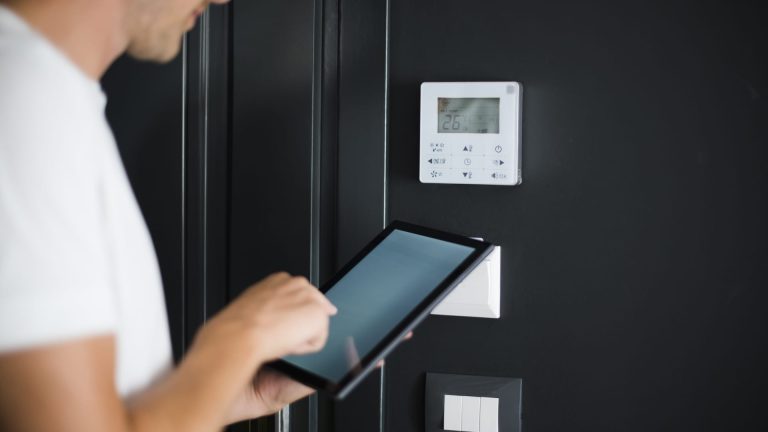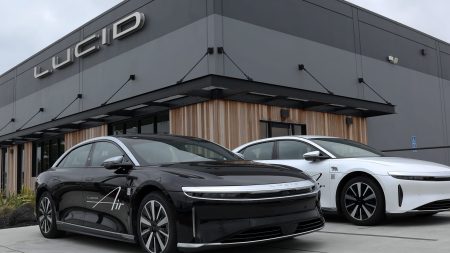Consumers may soon be able to access $14,000 or more of federal rebates for making energy-efficient upgrades to their home.
But just how soon will vary by state — and some may opt not to make the funds available at all.
The rebates are part of the Inflation Reduction Act, which earmarked $369 billion in spending for policies to fight climate change, amounting to the biggest piece of climate legislation in U.S. history. President Joe Biden signed the measure into law in August 2022.
The IRA devotes a total of $8.8 billion for two initiatives: the Home Efficiency Rebates program (which offers up to $8,000) and the Home Electrification and Appliance Rebates program (up to $14,000).
In essence, they are consumer discounts to cover the partial, or in some cases full, cost of home-efficiency projects like installing insulation or an electric heat pump or buying electric Energy Star appliances.
The rebates are generally designed to be delivered at the point of sale, from a retailer or contractor. Their value varies depending on factors like project expense, household income and total energy savings.
“It’s a first-of-its-kind program,” said Kara Saul Rinaldi, CEO and founder of AnnDyl Policy Group. “We’ve never had federal rebates like them before.”
Florida doesn’t plan to offer the rebates
States, which will administer the funds, must apply to the U.S. Department of Energy to receive their allocated grants. The application window opened July 27 when the DOE issued guidance to state energy offices on program design.
How soon the money might start flowing to consumers is unclear, however.
The earliest adopters may be able to implement their respective programs and begin issuing rebates near the end of 2023, but most will likely do so next year, according to federal officials and energy-policy experts.
“Exact timing will vary across programs, but generally DOE expects households to be able to access these rebates in much of the country in 2024,” Amanda Finney, a U.S. Energy Department spokesperson, explained in an e-mail.
One state, Florida, has publicly signaled it doesn’t intend to apply for its $346 million of allocated federal funds. (Only California and Texas have a higher state allocation.) It’s unclear if other states will bow out as well.
More from Personal Finance:
Are gas-powered or electric vehicles a better deal? EVs may win out in long run, experts say
Two alternatives to the $7,500 electric vehicle tax credit
That socially responsible fund may not be as ‘green’ as you think. Here’s how to pick one
The Inflation Reduction Act lets states use a share of their federal grant to administer the rebate programs (to hire staff, for example). Republican Florida Gov. Ron DeSantis, a 2024 presidential contender, vetoed the state’s authority to spend that administrative funding, which totaled about $5 million, according to a spokesperson for the state’s Department of Agriculture and Consumer Services.
As a result, the state isn’t applying for the federal rebates. It’s unclear if that stance will change if the administrative funding becomes available later, the spokesperson said.
Finney, the U.S. Energy Department spokesperson, said the Florida Energy Office hasn’t “formally notified” the Biden administration of its intent to decline the funds.
DeSantis has described certain environmental measures — like investing in companies that emit fewer greenhouse- gas emissions — as “woke,” an oft-used Republican critique of progressive policy.
The IRA narrowly passed the House and Senate, without one GOP vote. The law is a centerpiece of the Biden administration’s goals to slash greenhouse gas emissions and avoid the worst impacts of climate change.
“I think that politics [may] come into play, and if it does then it means funds would need to be redistributed to the other states,” AnnDyl Policy Group’s Rinaldi said on a recent Building Performance Association press call about the rebate programs.
States have an Aug. 16, 2024, deadline to notify the U.S. Energy Department if they intend to participate. Applications are due by Jan. 31, 2025.
Declined funds would then be redistributed.
Rebates may ‘stack’ with tax breaks, other incentives
The rebates — known collectively as Home Energy Rebates — are available to consumers until Sept. 30, 2031 (or until a state depletes its grants).
With some exceptions, it’s unlikely consumers can claim funds in both rebate programs due to rules against double-dipping, experts said. However, consumers may be able to pair rebates with certain clean energy tax credits, which are currently available.
“You can get tax credits even if the state [rebate] program isn’t in place yet,” said Jennifer Amann, a senior fellow in the American Council for an Energy-Efficient Economy’s buildings program.
Historically, such clean energy tax breaks have largely accrued to higher income households — who are more likely to have a tax liability and therefore benefit from the tax credits, which are nonrefundable. But lower earners can pair the new rebates with existing programs like the federal Weatherization Assistance Program.
By “stacking” rebates with other incentives, low earners can get more than $22,000 in potential support from the federal government, according to an analysis by the AnnDyl Policy Group. Middle-income households can get up to about $19,000, and higher earners can receive over $7,200, the analysis found.
Additional efficiency incentives may be available from local utilities, experts said.
The associated rebate income limits vary by region. They’re pegged to an area’s median income, as defined by the U.S. Department of Housing and Urban Development.
“Low-income households” are those that earn 80% or less of the area’s typical income. Those with “moderate” incomes earn 80% to 150%; “market rate” households have income exceeding 150%.
How the Home Efficiency Rebates program works
In dollar terms, larger rebates are generally available to the lowest earners. They’re eligible to have more of their efficiency project costs covered — perhaps up to 100%.
The Home Efficiency Rebates program is for consumers who cut their household energy use via efficiency projects: for example, by installing efficient air conditioners, insulation, air sealing, windows, doors and smart thermostats.
Rebate values are tiered based on household energy savings.
For example, low earners can get up to $4,000 or $8,000 toward their project costs if they cut their energy use by 20% or 35%, respectively. Generally, the rebate is capped at 80% of a project’s cost for low earners — though states can opt to cover 100%.
Middle and high earners can get up to $2,000 or $4,000, respectively, capped at 50% of project costs.
Overall, the program takes more of a “comprehensive” and “performance”-based approach for energy savings in the whole house, Amann said. Consumers would generally work with a contractor to ascertain qualifying projects and their associated energy reduction, she said.
How the Home Electrification and Appliance Rebates program works
The Home Electrification and Appliance Rebates program is more “prescriptive,” Rinaldi said. That’s because it pays specified dollar amounts for certain upgrades.
Consider these examples of Energy Star appliances, as outlined by the U.S. Energy Department:
- Up to $1,750 for an electric heat pump water heater
- $8,000 for an electric heat pump for space heating and cooling
- $840 for an electric heat pump clothes dryer
- $840 for an electric stove, cooktop, range, or oven
- $4,000 for an electric load service center
- $2,500 for electric wiring
- $1,600 for insulation, air sealing and ventilation
This rebate program is only available to low- and middle-income consumers.
Low earners can get 100% of project costs covered. Middle earners can get up to 50% of their costs covered. The total rebate is capped at $14,000 for both groups.
For more information, the U.S. Energy Department published lists of frequently asked questions about the rebate programs and clean energy tax credits.
Read the full article here









